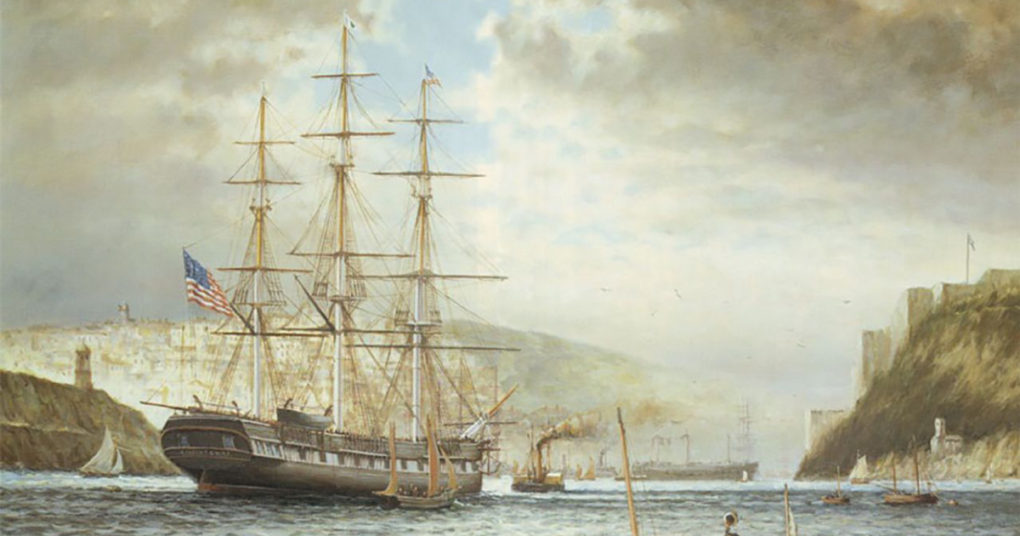The scale of Ireland’s Great Famine fills libraries with details of the misery and starvation that changed history not only in Ireland but also Britain, the United States, Canada and Australia as well as other countries around the world. The latest contribution to the literature, Voyage of Mercy, by Stephen Puleo, (St. Martin’s Press, New York, 2020, 311 pages, $28.99) not only brings a gripping retelling of all the well-known statistics, but goes more deeply into the unexpected changes that would soon impact the US as well as future Anglo-Irish relations.
Once the potato blight’s devastation began to circulate in American newspapers, its horror stirred Americans to respond in hundreds of local initiatives to collect grain and other foods, as well as clothing, to relieve Ireland’s misery. Farmers in American states like Pennsylvania, Ohio, Michigan, Maryland, Virginia, throughout the South, and along the Mississippi River, set aside their own produce for collection and shipment to relieve the Irish famine. Where food was not grown, the hat was passed for financial collections. Even one Indian tribe, impoverished from forced migration to Indian Territory only 10 years earlier, contributed to what became the first humanitarian relief effort in US history.
A Boston sea captain, Robert Bennet Forbes, obtained the use of a converted warship, the USS Jamestown, to carry food, clothing and supplies on the first voyage to Cork. In all, 118 ships eventually reached Ireland. In the meantime, Britain preached free market economics but did next to nothing to feed the 8 million living in its colony next door. Captain Forbes s first voyage which took place in record time spurred the outpouring of support that brought some relief, but more than anything, hope, to the beleaguered Irish.
Puleo’s narrative does not limit itself to the relief effort and its immediate impact. He also brings out the impact of the other major player, Rev. Theobald Mathew, known as Ireland’s Temperance Priest” who worked tirelessly but unfortunately without much success to obtain more relief from Britain.
At this point, politics takes the drama in new directions, as Puleo skillfully explains. Well known in America for his temperance work in Ireland, Mathew comes to America at the invitation of both temperance and abolitionist activists which included many Protestant clergymen. His stage appearance with the latter was none too pleasing to Boston’s Catholic archbishop. Nor were the abolitionists happy when Mathew declines to support their antislavery crusade. Nor were the few immigrant Irish signing on to abolition since they saw freed slaves as a threat to their meager wages.
Britain’s relief effort came in the form of subsidized passage to Canada and other colonies as well as Irish paying their own way by the millions to their newfound savior, the US. In such numbers did they arrive that their population in major East Coast cities and Chicago soon swamps the native born, stirring anti-immigrant fears which continue to this day.
Fast forward 70 years in Ireland, and the resentment toward Britain leads to neutrality in World War Two which kept strategic Irish ports out of British hands. Even when Winston Churchill apparently offered Northern Ireland in return for Ireland entering the war, Eamon de Valera turned him down. Ireland went further in its noncooperation by making life difficult for returning Irish volunteers in the British Army at war’s end.
About the Author: John Powers
John Powers works for Scepter Publishers, USA and lives in St Louis, Missouri.

